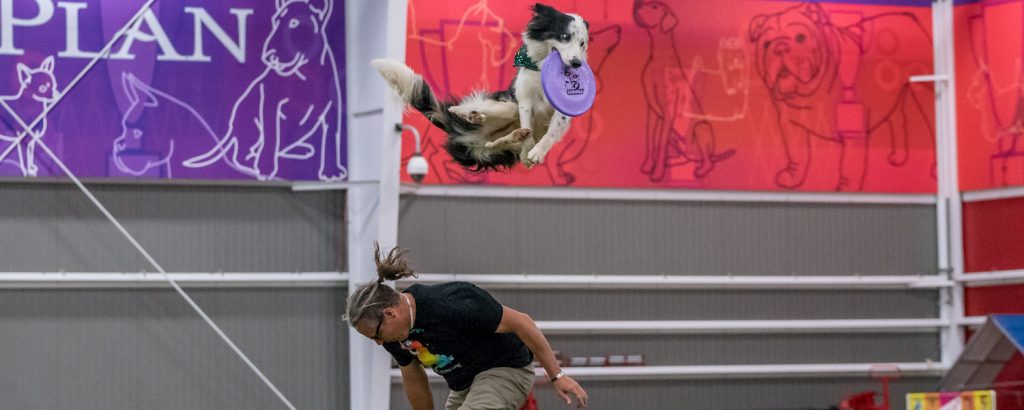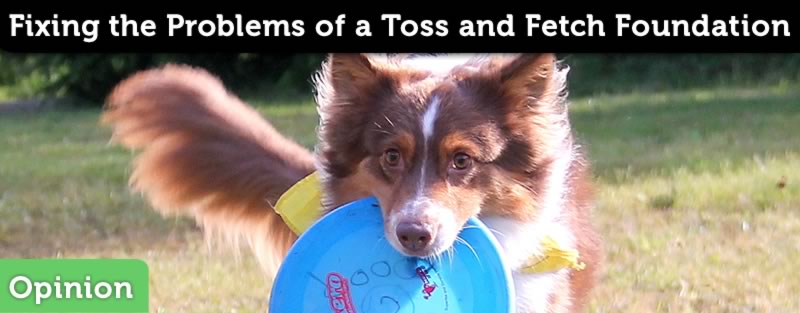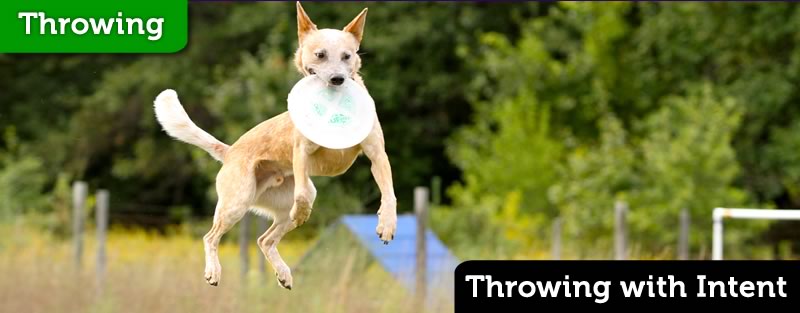
On Disc Dog Vaulting – How to Never Be Late Again
Odds are if you’re a disc dog freestyler, I have your attention.
The timing of vaults is critical to success and safety. Poor vault timing, almost always too late, can be a maddening and frustrating problem. It keeps handlers from developing the confidence to put the target up there which reduces the confidence and commitment by the dog. It’s a vicious circle.
In the past we focused on two phrases for vaulting when teaching: Too Late and Too Low.
It caught on and has become the standard advice on vaulting. The only problem is that it’s wrong. Well, maybe not wrong, but it sure isn’t right.
Exactly When is Too Late?
Serious question…
The problem with saying “Too Late” or trying to “not be late” is that there is no affirmative resolution. It’s very hard to not be something. Add to that the constant mental drumbeat of “Don’t Be Late” and you are pretty much destined to be late.
When you do get something close to being on time, was it the correct timing? Or was it just “not late”? It’s impossible to be on time when the frame of reference is too late.
A better frame would be “On Time”. This leads to an important question: What does “On Time” mean?
We need to know what the correct time is in order to be on time, right? So when is that?
On Time…
The dog needs to leave the ground for the target. If you want to “not be late” the disc has to be in the air before the dog leaves the ground.
That’s nice, now that we know when we’re supposed to throw, it should be easy to not be late, right? It should be easy to throw the disc up on time, before the dog leaves the ground.
There is still a bit of a problem: before, time, late, early, after, when… All of this timing stuff is not helpful. When is the right time? Can you be perfectly timed? To the tenth of a second? How about the hundredth? Milliseconds? Time can be broken down into billions and trillionths of a second. That shit sounds hard!
Perfect timing doesn’t exist. Trying to be perfect in terms of time is not going to happen.
Focus on timing is focusing on a grey area. It’s all grey. A little late… A little earlier… Almost on time…
Change Timing to Concrete Criteria
We know that the dog needs to leave the ground for the target to be on time. We know that if the dog leaves the ground and then we throw that we are late.
But that time stuff gets in the way of being correct, and shifts our focus from the task at hand, the vault, to a ticking clock. Tick tock.
The way to be perfectly correct is to change your frame of reference from the fuzzy timing criteria to a concrete criteria that has a stronger, physical connection to the task at hand.
Do or Do Not, There is No Time
The dog either leaves the ground for the target, or does not.
“Too late again?”
“Did the dog leave the ground for the target? Yes or No.”
“Yes.”
“Then it was good.”
“Was that early enough?”
“Did the dog leave the ground for the target?”
“No.”
“Try it again. Make sure the dog leaves the ground for the target.”
Do you see that it is very easy to be correct? This is completely black and white criteria. The dog leaves the ground for the target or does not.
Unlike being late or throwing earlier, there is no grey in there at all.
True or False: the dog left the ground for the target.
Easy answer, right? Fixing it is also easy. Throw it so the dog leaves the ground for the target.
No Timing, No Problem
Since I started using this framing for throwing vaults a couple of years ago, I’ve never been late. My dogs have left the ground without a thrown target being visible, but I have not been late.
The number of flubbed vaults because of timing has reduced dramatically. My confidence in pulling the trigger “on time” has bumped up quite a bit, and as a result my dogs are much more confident vaulters.
It’s become rather easy for the team to commit to vaults because the handler isn’t freaking out about being late.
Avoid the Timing Trap
The hard thing is keeping the language of time and the timing metaphors out of your brain at all times. Avoid all thoughts and mention of time when working vaults.
I’ll catch myself saying “before” during training and while working with people.
Before is a time thing, as soon as I’ve said that, we’re now thinking about timing, and we’re likely to be late.
Avoid the time trap by avoiding time altogether.
If you question your timing ask yourself:










Responses